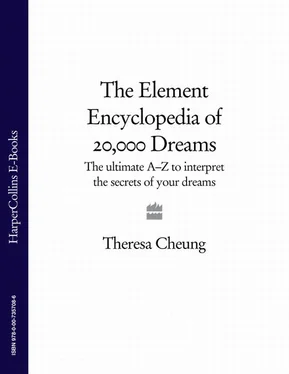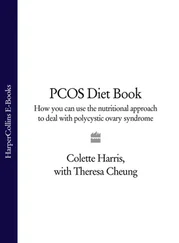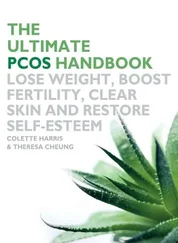For ease of reference you may prefer to first turn to part three of the book: The Dream Directory. This lists every dream entry in the book in alphabetical order, so it is simple to look up specific dreams; it also functions as a cross-reference to other relevant entries.
‘I dream, therefore I exist.’
J. August Strindberg
Dreams. They tantalize us with their mystery. What are they? Why do we have them? Where do they come from? What do they mean? Are they a preview of things to come or glimpses of the past? Are they a vital link to our inner world; a gift from our intuition? Can dreams lead us to important insights in our waking life, and help us decide which action to take and which path to follow?
The Hows, Whys and Whats of Sleep and Dreams
‘Sleep is the balm for hurt minds, nature’s great second course.’ William Shakespeare
Sleep is absolutely crucial for our physical, mental and emotional health and well-being. It is during sleep that we abandon conscious control of our physical body and the unconscious mind is allowed to roam free, giving rise to dreams.
Although we now know a lot more about dreams, their real purpose isn’t yet fully understood. It wasn’t until we approached the middle of the twentieth century, with the first electronic monitoring of the brain, that we began to get a clearer idea of the nocturnal adventures of the mind. For centuries it was thought that the purpose of sleep was to rest the body and the mind, but this reasoning was disproved when it was shown that both the body and mind are active during sleep. If sleep doesn’t rest the body or mind, then what is it for?
Sleep researchers may not yet have discovered the exact reason for sleep or dreams but they have discovered some fascinating things. For example, it seems that when we are asleep our brains are a bit like computers that are offline. This means they are not idle but are filing and updating the day’s activities. They take stock of your body and release a growth hormone to repair damaged tissues and stimulate growth, while the immune system gets to work on attacking any viral or bacterial infections that may be present. Some experts believe the brain also jettisons trivial information during sleep to prevent it becoming overburdened with unimportant information, but this explanation is perhaps too simplistic, as no memory can be totally eradicated.
The advent of space travel gave scientists the opportunity to prove that resting the body was not the main function of sleep. What they found instead was that prolonged periods of isolation decreased the need for sleep. In other words, the fewer stimuli received from people or external contacts during the day, the less sleep was required. It seems we have a sleep control center at the base of our brain linked with activity during wakefulness. When that gets overloaded we get tired, but if there have not been enough stimuli from the outside world, the sleep mechanism isn’t triggered. It seems, therefore, that boredom and lack of stimuli may account for many cases of insomnia. (Paradoxically, overstimulation also produces insomnia.)
‘Yet it is in our idleness, in our dreams, that the submerged truth sometimes comes to the top.’ Virginia Woolf
Perhaps the best way to understand sleep and dreams is to understand the brain. At the very start of the twentieth century it was found that the brain gave off electrical impulses, and by the 1920s scientists could measure brain waves. To obtain these readings, electrodes were attached to various parts of the head, the impulses being transformed onto electroencephalograms (EECs) on computer screens.
It seems that once you settle down to bed, your brain and body undergo radical changes from their waking state. The difference between being asleep and being awake is loss of conscious awareness, and once you start to doze, dream researchers believe you progress through four stages of sleep. These form the basis of a cycle that repeats up to four or five times every eight hours of sleep.
During the first stage, your body and mind become relaxed. Heart and breathing rate slow down, blood pressure lowers, body temperature drops slightly and eyes roll from side to side. You are neither fully conscious, nor fully unconscious, and could easily awake if disturbed. This stage of gradually falling asleep is also called the hypnagogic state (the hypnopompic state is a similar state when you are just waking up) and you may experience hallucinations that float before your eyes.
In stage two, breathing and heart rate become even slower, eyes continue to roll and you become more and more unaware of the noises of the outside world. It isn’t until the third stage of sleep, however, that you are sleeping soundly and it would be difficult to wake you. Finally, you enter a deep sleep state known as non-rapid eye movement (NREM) when your brain is released from the demands of the conscious mind. It will now be quite hard to wake you and, although you may sleepwalk or have night terrors, you will rarely be able to remember them. This slow-wave sleep cycle lasts about ninety minutes. At the end of stage four, you move back through stages three and two and one, at which point you enter a phase called rapid eye movement, or REM, sleep.
REM sleep is recognized by tiny twitches of facial muscles and slight movements of the hands. Blood pressure rises, breathing and heartbeat become faster, eyes dart rapidly around the eyelids under closed eyelids as if looking at a moving object and, if you are a man, you may have an erection. Researchers have discovered that when sleepers are awakened during REM sleep they typically say they have been dreaming. (You may also feel temporarily paralyzed if awakened during this stage, as if something malevolent is pressing down on you; this phenomenon can explain the supposed succubus, incubus and alien abduction experiences.)
Most of the dreams you remember occur during the REM stage when the brain is fully active. After about ten minutes of REM you enter stages two, three and four again, and keep moving backwards and forwards through the sleep cycle. As the cycle continues, however, the REM phase gets longer and longer with the longest phase being around thirty to forty-five minutes. Of all your dreams during all the stages of REM and NREM (it has recently been discovered that we can dream then too), the final REM stages are the ones you are most likely to remember.
How much sleep do we need?
We spend approximately one third of our life asleep. This means that by the time we reach the age of ninety 1 we have been asleep approximately thirty years. The exact amount of sleep each person needs depends on many factors, including age and activity levels during the day. Babies sleep for about fourteen hours a day, whilst teenagers need about nine hours on average. For most adults occupied physically and mentally during the day, eight hours a night appears to be the average amount of sleep needed, although some people may need as few as five, or as many as ten hours, of sleep each day. Older people tend to need around six hours sleep a night.
Because sleeping and dreaming are so crucial, your brain may sometimes demand the sleep it needs so that you don’t get into mental or physical overload. That’s why you may sometimes drop off for no apparent reason when you’re traveling by car or train, or watching TV.
Research on sleep-deprived animals shows that sleep is necessary for survival. For example, whilst rats normally live for two to three years, those deprived of REM sleep survive only about five weeks on average, and rats deprived of all sleep stages live only about three weeks. Other studies have shown that subjects repeatedly awoken during REM—which means they were deprived of dreams—become anxious, bad tempered and irritable. This suggests that sleep is vital for physical rest and repair, and REM sleep, when we are most likely to dream, is essential for our emotional well-being. Therefore, although we still aren’t sure about the whys, whats and hows of sleep and dreams, it’s possible to conclude that the reason we sleep is to dream.
Читать дальше


![Theresa Cheung - The Dream Dictionary from A to Z [Revised edition]](/books/618735/theresa-cheung-the-dream-dictionary-from-a-to-z-r-thumb.webp)
![Theresa Cheung - The Dream Dictionary from A to Z [Revised edition] - The Ultimate A–Z to Interpret the Secrets of Your Dreams](/books/692092/theresa-cheung-the-dream-dictionary-from-a-to-z-r-thumb.webp)








